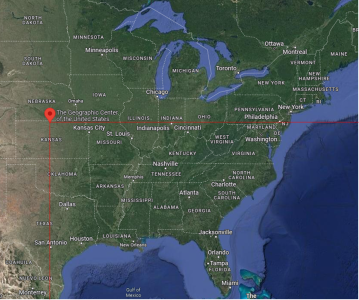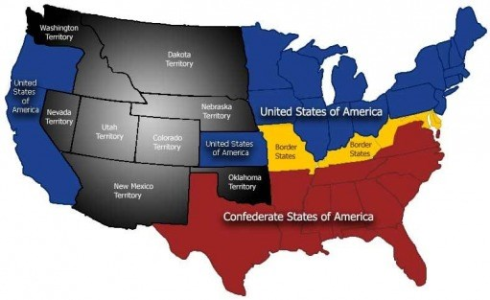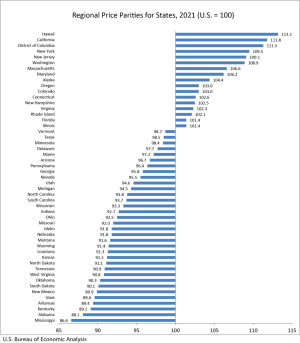volfan2024
“Wanna play ball scarecrow “
- Joined
- Oct 23, 2005
- Messages
- 13,025
- Likes
- 2,843
Too many teams wanting in, getting in, wrecking rivalries, I liked it when you basically played every team, eventually. Now, everyone wants a piece of the SEC pie. All about the money now.
I was thinking something similar this morning. Even though this weekend's game is big and should be really good, somehow I'm just not as excited as I would be with an old school SEC team coming to town.Too many teams wanting in, getting in, wrecking rivalries, I liked it when you basically played every team, eventually. Now, everyone wants a piece of the SEC pie. All about the money now.
Ah yes, recall listening on the radio because you either attended the game or listened, no TV.Too many teams wanting in, getting in, wrecking rivalries, I liked it when you basically played every team, eventually. Now, everyone wants a piece of the SEC pie. All about the money now.


I agree and have always felt the SEC was best when you can get in your car as a student and drive to away games. That went away with expansion.I was thinking something similar this morning. Even though this weekend's game is big and should be really good, somehow I'm just not as excited as I would be with an old school SEC team coming to town.
You make a good point for categories.The SEC remains a fully regional conference. Not sure why some folks think it isn't.
Whether you define "southeast" geometrically (every SEC school, present and future, is southeast of Lebanon, Kansas, the geographic center of the lower 48) ... or culturally (every SEC state either seceded from the Union in 1861 or was a "border state" like Kentucky and Missouri--Oklahoma being an exception because they weren't a state yet), every member of the conference belongs.
View attachment 586165
View attachment 586166
Contrast that with the B10, whose footprint is the "Mid-west" but now includes schools from both coasts (Maryland, Rutgers in New Jersey, California, Oregon, and Washington).
Or the Atlantic Coast Conference, with California and Texas teams.
Or the B12, a Great Plains conference, with West Virginia, Florida, and Ohio schools.
So only the SEC and Pac-12 remain regional. And the Pac-12 only has 2 members starting next year. Heh.
So yep, this may not be the "Old SEC league" of our grandfathers' day, but it alone has maintained regional integrity.
Go Vols!
| Region | 2020 Median Household Income (2021 dollars) | 2021 Median Household Income |
|---|---|---|
| United States | $71,186 | $70,784 |
| Northeast | $79,032 | $77,472 |
| West | $78,755 | $79,430 |
| Midwest | $70,528 | $71,129 |
| South | $64,355 | $63,368 |
This is true, but the cost of living is much higher in other regions of the country. So in terms of purchasing power there probably is not much difference.You make a good point for categories.
But a factor little discussed is while we maintain regional integrity, it is the poorest region in the USA. 7 of the 10 poorest states in the USA are in "the region", with nine current member schools representing those states, and add another if Clemson is added.
I make this point because it could push the B1G more ahead of us on futureTV deals because of desirability of demographics for advertisers. B1G simply represents a richer base for advertisers. For example, USA median household income is $74,580 (2022), while TN's median household income is $64,380. Mississippi is the bottom at $48,716, Louisiana is little better with $52,087 (both 2021).
Two potential mediating factors might be TV Ratings and population growth, which would favor states South of the Mason Dixon. With B1G going to more of a network TV model, it will be interesting to see how that affects TV ratings going forward.
Some will argue fanbase passion will make us more desirable. That fact may keep SEC programs in the Top 20 money makers, but is not a measurable advertisers and programmers can be counted on to consider as a factor in our favor on TV deals. The financial pecking order could be in flux the next 10 years.
The Northeast and West have higher median household incomes than the Midwest and South
from Peter G Peterson Foundation
Region 2020 Median Household Income (2021 dollars) 2021 Median Household Income United States $71,186 $70,784 Northeast $79,032 $77,472 West $78,755 $79,430 Midwest $70,528 $71,129 South $64,355 $63,368
The SEC remains a fully regional conference. Not sure why some folks think it isn't.
Whether you define "southeast" geometrically (every SEC school, present and future, is southeast of Lebanon, Kansas, the geographic center of the lower 48) ... or culturally (every SEC state either seceded from the Union in 1861 or was a "border state" like Kentucky and Missouri--Oklahoma being an exception because they weren't a state yet), every member of the conference belongs.
View attachment 586165
View attachment 586166
Contrast that with the B10, whose footprint is the "Mid-west" but now includes schools from both coasts (Maryland, Rutgers in New Jersey, California, Oregon, and Washington).
Or the Atlantic Coast Conference, with California and Texas teams.
Or the B12, a Great Plains conference, with West Virginia, Florida, and Ohio schools.
So only the SEC and Pac-12 remain regional. And the Pac-12 only has 2 members starting next year. Heh.
So yep, this may not be the "Old SEC league" of our grandfathers' day, but it alone has maintained regional integrity.
Go Vols!

But a factor little discussed is while we maintain regional integrity, it is the poorest region in the USA. 7 of the 10 poorest states in the USA are in "the region", with nine current member schools representing those states, and add another if Clemson is added.
This is true, but the cost of living is much higher in other regions of the country. So in terms of purchasing power there probably is not much difference.

I was thinking something similar this morning. Even though this weekend's game is big and should be really good, somehow I'm just not as excited as I would be with an old school SEC team coming to town.
how far are you willing to drive? for most people its about 3-4 hours before you start thinking about flying which would put it outside of most student's reach. only 3 schools fall within a 4 hour drive. even if you stretch it to a 5 hour drive you are only reaching 5/9 original SEC teams.I agree and have always felt the SEC was best when you can get in your car as a student and drive to away games. That went away with expansion.
In my perfect world, I would like to see the SEC with its former football members Georgia Tech and Tulane. Georgia Tech has one of the best old, historic stadiums in the South and it's an easy drive to a large, dynamic city (Atlanta) for most SEC schools. Tulane would allow trips to New Orleans, which in my opinion is one of the best cities to visit in the US.
I also would have preferred Clemson and Florida St due to their locations and fan bases that fit the SEC.
I know all about the argument of TV revenue and reaching new TV markets, but I like the idea of regional road trips that don't require getting on a plane.
While all this is true, it's not gonna stop Bubba in his 50 year old single wide trailer, selling his food stamps to pay his cable bill so that him and his sister can watch their beloved tide on Saturdays.You make a good point for categories.
But a factor little discussed is while we maintain regional integrity, it is the poorest region in the USA. 7 of the 10 poorest states in the USA are in "the region", with nine current member schools representing those states, and add another if Clemson is added.
I make this point because it could push the B1G more ahead of us on futureTV deals because of desirability of demographics for advertisers. B1G simply represents a richer base for advertisers. For example, USA median household income is $74,580 (2022), while TN's median household income is $64,380. Mississippi is the bottom at $48,716, Louisiana is little better with $52,087 (both 2021).
Two potential mediating factors might be TV Ratings and population growth, which would favor states South of the Mason Dixon. With B1G going to more of a network TV model, it will be interesting to see how that affects TV ratings going forward.
Some will argue fanbase passion will make us more desirable. That fact may keep SEC programs in the Top 20 money makers, but is not a measurable advertisers and programmers can be counted on to consider as a factor in our favor on TV deals. The financial pecking order could be in flux the next 10 years.
The Northeast and West have higher median household incomes than the Midwest and South
from Peter G Peterson Foundation
Region 2020 Median Household Income (2021 dollars) 2021 Median Household Income United States $71,186 $70,784 Northeast $79,032 $77,472 West $78,755 $79,430 Midwest $70,528 $71,129 South $64,355 $63,368
Is there anything there about disposable income per region?You make a good point for categories.
But a factor little discussed is while we maintain regional integrity, it is the poorest region in the USA. 7 of the 10 poorest states in the USA are in "the region", with nine current member schools representing those states, and add another if Clemson is added.
I make this point because it could push the B1G more ahead of us on futureTV deals because of desirability of demographics for advertisers. B1G simply represents a richer base for advertisers. For example, USA median household income is $74,580 (2022), while TN's median household income is $64,380. Mississippi is the bottom at $48,716, Louisiana is little better with $52,087 (both 2021).
Two potential mediating factors might be TV Ratings and population growth, which would favor states South of the Mason Dixon. With B1G going to more of a network TV model, it will be interesting to see how that affects TV ratings going forward.
Some will argue fanbase passion will make us more desirable. That fact may keep SEC programs in the Top 20 money makers, but is not a measurable advertisers and programmers can be counted on to consider as a factor in our favor on TV deals. The financial pecking order could be in flux the next 10 years.
The Northeast and West have higher median household incomes than the Midwest and South
from Peter G Peterson Foundation
Region 2020 Median Household Income (2021 dollars) 2021 Median Household Income United States $71,186 $70,784 Northeast $79,032 $77,472 West $78,755 $79,430 Midwest $70,528 $71,129 South $64,355 $63,368
I'd add Tennessee-Kentucky and Alabama-LSU to that list.When I think of the historical rivalries in the SEC (not the ones which emerged just since the 1992 expansion) .... There are 7 that come to mind :
1) Georgia vs Auburn
2) Georgia vs Florida
3) Alabama vs Auburn
4) Alabama vs Tennessee
5) Ole Miss vs LSU
6) Ole Miss vs Mississippi State
7) Vanderbilt vs Tennessee
I expect that these 7 games will still be played on an annual basis.
I definitely don't miss the days when bowl tie-ins kept the best teams from playing each other at the end of the season (like 1991 and 1997) and getting to watch Tennessee on live television was a big deal .... like 1982, when Tennessee's upset of Alabama wasn't televised anywhere live (you could watch the replay with John Ward's call at 11:30 pm locally), even though Alabama was ranked 2nd in the nation at the time.
Sorry, but things weren't always better in the good ol' days.
We only played 6 conference games.
Only played Georgia, Florida, LSU, Mississippi State every 7 years.
Florida and Georgia rivalries weren't even on the radar.
Finished every year with Ole Miss, UK and Vandy teams that were mostly terrible.
I don't see how what we have today isn't a net positive.
You make a good point for categories.
But a factor little discussed is while we maintain regional integrity, it is the poorest region in the USA. 7 of the 10 poorest states in the USA are in "the region", with nine current member schools representing those states, and add another if Clemson is added.
I make this point because it could push the B1G more ahead of us on futureTV deals because of desirability of demographics for advertisers. B1G simply represents a richer base for advertisers. For example, USA median household income is $74,580 (2022), while TN's median household income is $64,380. Mississippi is the bottom at $48,716, Louisiana is little better with $52,087 (both 2021).
Two potential mediating factors might be TV Ratings and population growth, which would favor states South of the Mason Dixon. With B1G going to more of a network TV model, it will be interesting to see how that affects TV ratings going forward.
Some will argue fanbase passion will make us more desirable. That fact may keep SEC programs in the Top 20 money makers, but is not a measurable advertisers and programmers can be counted on to consider as a factor in our favor on TV deals. The financial pecking order could be in flux the next 10 years.
The Northeast and West have higher median household incomes than the Midwest and South
from Peter G Peterson Foundation
Region 2020 Median Household Income (2021 dollars) 2021 Median Household Income United States $71,186 $70,784 Northeast $79,032 $77,472 West $78,755 $79,430 Midwest $70,528 $71,129 South $64,355 $63,368
Excellent point, but I will say, the real story of the structure of a TV deal will be disposable income by TV ratings for each program.Not necessarily. As Liberty points out:
Purchasing power parity (PPP) is a metric economists use to help figure out what regions are REALLY richest or poorest. Simply put, if you can buy a "standard bag of goods" (let's say it is groceries, electric bill, a tank of gas, a new shirt and slacks, and home rent/mortgage) if you can buy that standardized bag of goods for $900 a month, and the fella in California has to spend $1,100 a month for the same items, then it's okay if you only make 82% as much as him. Your purchasing power is the same as his.
The price parities in the US are calculated regularly. Here's the most recent I've seen:
View attachment 586195
Using your wage/salary figures for the South ($64,355) and the West ($78,755), the ratio of earnings is about 82%. And as you can see in the figure above, Tennessee's cost of living is in a 90.9 to 111.8 ratio with California, which is also about 82%.
We make about 82% as much. And we only have to pay about 82% as much for the same stuff.
In other words the South isn't actually poorer than the West. We're equally well off, materially. Just a cheaper cost of living.
What does all that mean for TV contracts? Not a lot. When it comes to TV, it's purely a question of supply and demand. The SEC has a monopoly on the best football in college. A lot of folks want to watch those games. So ESPN will find a way to buy those rights from the SEC. And that can result in prices that are just as high as those in the B10 or PAC regions, even if our region is less expensive to live in.
So the Southeast being cheaper (not poorer, cheaper) isn't much of an impact after all.
Go Vols!
Huh. I didn’t realize that Knoxville to Columbia, MO (8.5 hours) is about as long as Knoxville to Gainesville and less than driving from Knoxville to Baton Rouge.how far are you willing to drive? for most people its about 3-4 hours before you start thinking about flying which would put it outside of most student's reach. only 3 schools fall within a 4 hour drive. even if you stretch it to a 5 hour drive you are only reaching 5/9 original SEC teams.
and you went as a student because there was no other way to watch the game.
Knoxville to Oxford 6.5 hours
Knoxville to Jackson 7.25 hours
Knoxville to Tuscaloosa 4.75 hours
Knoxville to Auburn 5 hours
Knoxville Baton Rouge 9.5 hours
Knoxville to Athens 4 hours
Knoxville to Nashville 3 hours
Knoxville to Lexington 2.75 hours
Knoxville to Gainesville 8.5 hours
that's an AVERAGE of 5.5 hours. that's almost double what most people would be willing to drive every weekend. sure if its your once a season trip you may go 6 hours, but for most people when every game is televised you aren't making that drive 5-6 times a season.
